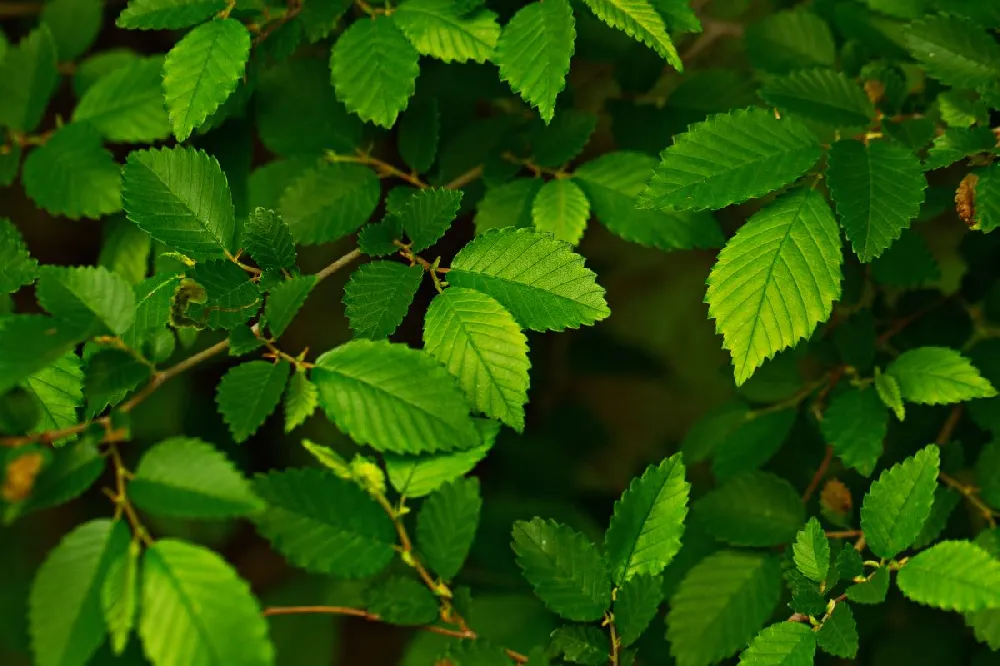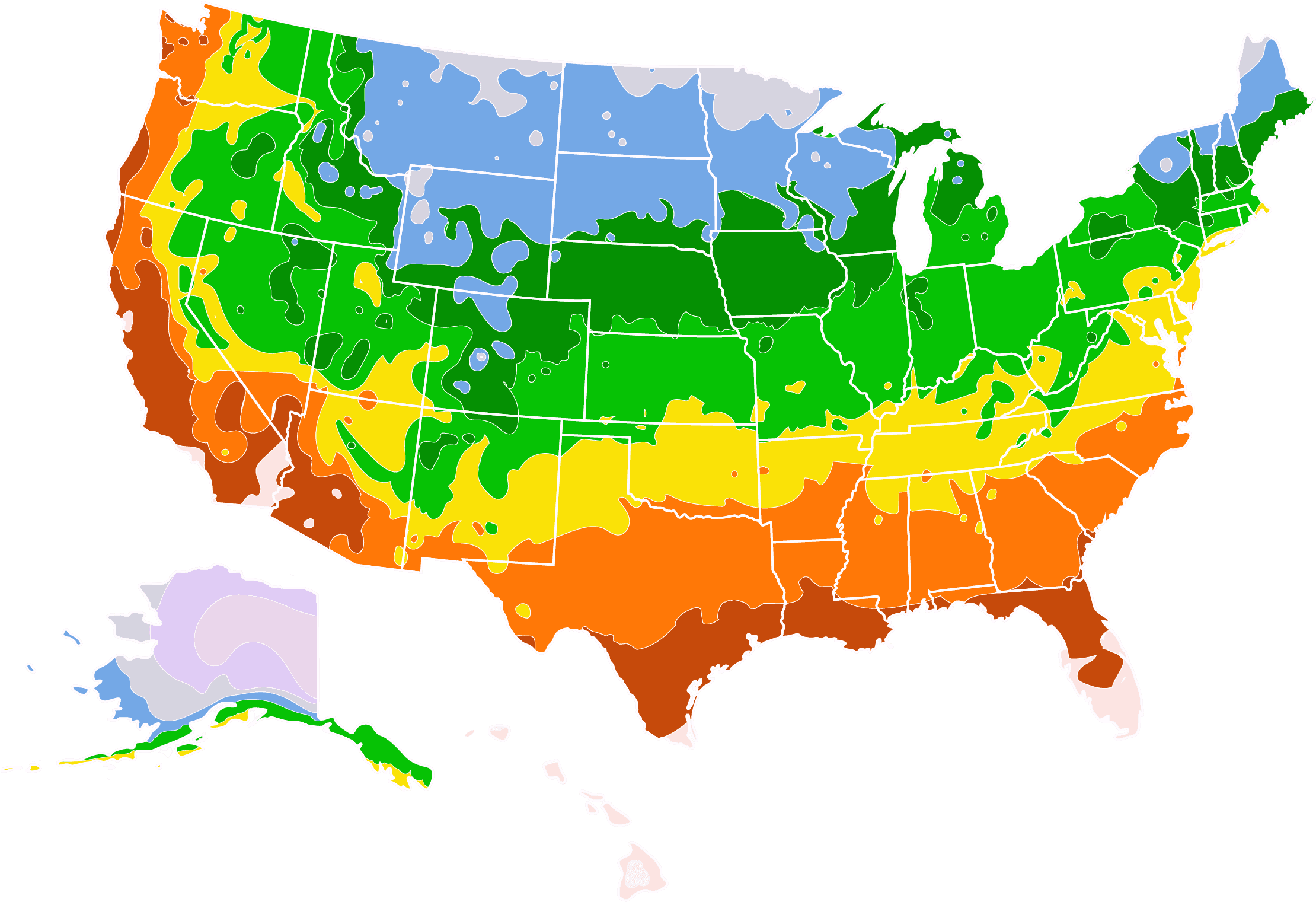- Home >
- Ornamental Trees >
- Lacebark Elm Tree
Lacebark Elm Tree for Sale - Buying & Growing Guide
When searching for a shade tree for a street, park, residential property, or anywhere else, the lacebark elm tree is one of the best plants you can choose. Ulmus parvifolia develops large branches that cast shade while providing plenty of space to sit or walk beneath the canopy. Lacebark elms also differentiate themselves from other elms via their interesting bark, which carries shades of gray, tan, and orange. However, despite such beauty, the most valuable trait of a lacebark elm tree is its resistance to Dutch elm disease, which afflicts many other elm tree varieties.
- Arching branches create a vase-like form, perfect for creating shade.
- Incredible bark shows multiple colors and textures.
- The lacebark elm tree has an impressive resistance to Dutch elm disease.
Enter your zip code to find nearby stores that may carry this plant.
Plant Care
Sunlight

The lacebark elm tree grows best in full sunlight areas.
Watering
During the growing season, water often enough to keep the soil consistently moist — about once per week or less.
Fertilizing

Fertilize monthly with an all-purpose fertilizer mix.
Planting and Care
Planting instructions
The prerequisites for a proper lacebark elm tree growing location are full sunlight and moist, well-draining soils that hold plenty of organic nutrients. Beyond those needs, the lacebark elm tree is not too picky. It can adapt to a wide range of soil pH levels and is also tolerant of the harsh conditions that are often present in urban environments. That last trait, along with the excellent shape of this tree, has made the lacebark elm one of the most reliable street trees throughout USDA hardiness zones 5 through 9.
Watering and nutrients
Your goal when watering a lacebark elm tree is to maintain a relatively consistent level of soil moisture at all times. The best way to ensure such moisture is to monitor the soil for dryness. When you notice the first layers of soil have become dry, it’s a good idea to add water. Generally, this will amount to a watering frequency of once per week or once every other week during the growing season. You can also fertilize throughout the growing season, about once per month or more, with a balanced fertilizer blend.
Pollination
Although the lacebark elm tree is quite beautiful, its flowers are not likely a trait that you’ll notice. The flowers of this species are entirely functional rather than holding ornamental value. Each lacebark elm tree will bloom in spring with both male and female flowers on a single tree, allowing for self-pollination. These flowers are small and well-hidden behind the tree’s leaves. When in bloom, the flowers will release their pollen into the air to allow for the possibility of pollination.
Pruning
You should avoid pruning a lacebark elm tree during the spring season, as doing so at that time can cause the plant to bleed significant amounts of sap, which is detrimental to its overall health. The best time to prune is in summer when the sap no longer runs to the same degree. When you prune, use clean tools to remove any branch that is dead, damaged, or shows signs of disease. Regarding aesthetics, you should encourage a single central leader and prune lower branches to emphasize the overall vase shape this plant can achieve.
Pests, diseases, and animals
One of the most noteworthy characteristics of the lacebark elm tree is its amazing ability to resist both pests and diseases. Most importantly, the lacebark elm tree rarely falls victim to Dutch elm disease, a disease that has essentially wiped out other popular elm varieties. However, the resilience of this plant does not end there, as it also resists many other common garden infestations and infections, including canker, leaf spots, wilt, and more. When such complications do arise, they are often quite mild as well.
Achieving maximum results
The lacebark elm tree is an excellent species to place in areas where other plants may struggle. For instance, not only does the lacebark elm tree have great disease and pest resistance, but it can also withstand flooding, drought, and air pollution. If you live in an area where winters are cold, you also won’t need to worry too much about winter damage, as lacebark elm trees are surprisingly capable of shedding ice and snow without breaking.
FAQs
Does the lacebark elm tree lose its leaves in fall?
Is the lacebark elm tree invasive?
While the lacebark elm tree has plenty of merits, it is not without some faults. Mainly, the lacebark elm tree is listed as an invasive species in some regions. This classification is most common in states that belong to the northeast and southwest regions of the United States. The durability and large seed production of this tree allow it to survive and multiply with ease in many different growing locations.
Are lacebark elm trees messy?
Beyond holding an invasive status in some places, the other main downside to the lacebark elm tree is that it is a somewhat messy tree. In spring, these trees release a lot of pollen that travels via the wind. Later in the season, lacebark elm trees drop copious amounts of winged samaras, the fruits that carry this plant's seeds. At times, the exfoliating bark of this tree may also add to the mess — parts of the bark may flake off and fall to the ground as the trunk expands.
Compare Similar Products
You can't add more Product Name - Product size to the cart.
OK








